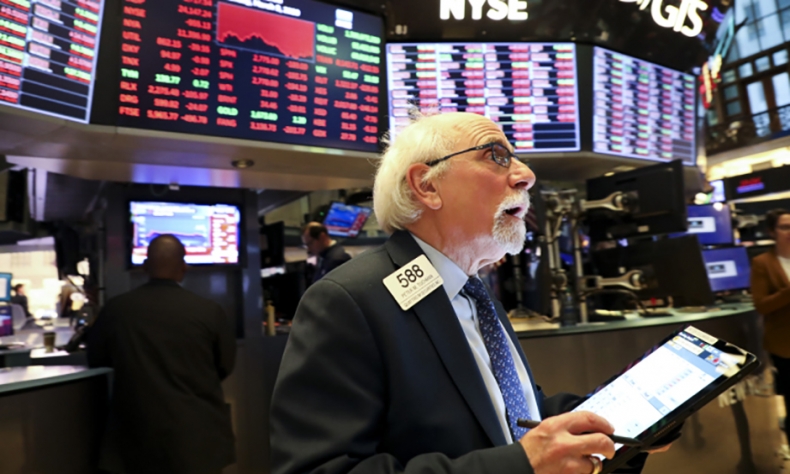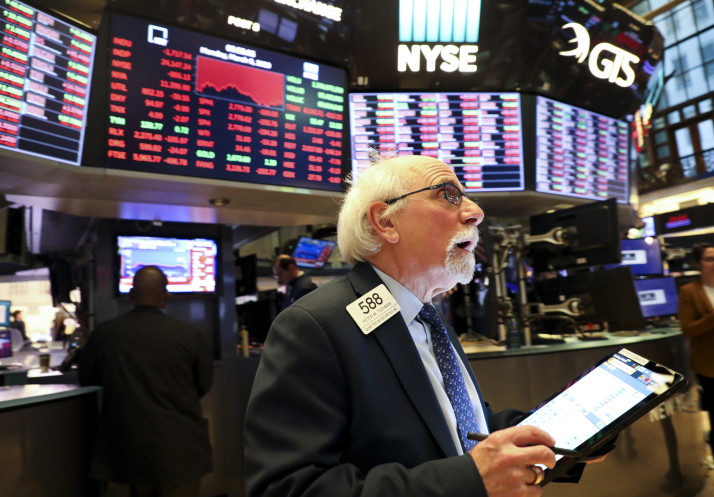A Surgical Cut

Effects of the Fed’s rate slash remain uncertain
On March 9, all three major U.S. stock indexes tumbled more than 7 percent. A key market circuit breaker was triggered for the first time since the 2008 global financial crisis, with $3-trillion market value evaporating. The stock markets of other major economies also experienced a new Black Monday as a result of the spillover effect.
Aside from the impacts of a sharp drop in the oil market and the spread of the novel coronavirus, another factor is also regarded a reason for the turmoil.
On March 3, the U.S. Federal Reserve (Fed) announced its first emergency cut since the 2008 global financial crisis. It lowered its target range for the federal funds rate by 50 basis points to 1-1.25 percent to tackle the economic and financial challenges and risks triggered by the epidemic. The action indicates the increased economic pressure the U.S. faces now.
Multiple motives
The novel coronavirus pandemic poses a severe threat to global economic growth. Despite the situation showing signs of control in China, the outbreak is growing in other countries, especially in Italy, the hardest hit in Europe. Major economies have been forced to trim their growth forecasts for 2020.
Although the U.S. economy has presented a good performance statistics-wise with booming consumption, manufacturing and investment have remained sluggish. Together with external factors such as the slowdown in global economic growth and disruptions of supply chains due to the epidemic, the downward pressure on the U.S. economy is likely to increase, which prompted the Fed to cut the rate.
Since the outbreak of the global financial crisis in 2008, unconventional monetary policies such as quantitative easing have been implemented. Global capital poured in to keep the U.S. stock market bullish for a record long time. But as the real economy weakens and the capital market undergoes fluctuations, investors feel sensitive and fragile.
Moreover, the novel coronavirus outbreak has impaired economic fundamentals and enterprises’ expected profits, which administered a shock to the U.S. stock market, with more than $1 trillion of market value evaporating. Facing the ensuing panic, the rate cut had been expected to prevent a continued vertiginous drop in the stock market and another financial crisis.
U.S. President Donald Trump has been consistently pressuring the Fed to lower the rates. Even after the latest cut, he called for “more easing and cutting!” The day the cut was announced also marked voting in presidential primaries in 14 states to choose the Democratic nominee. Under fierce political competition, U.S. policies are facing greater uncertainty, which also compelled the Fed to take this action to stabilize the market. But the stock market plunge indicated that the tactic may not work.

A chain effect
With uncertainty overlaying the global economy, financial authorities worldwide may increase efforts to adjust their monetary policies.
Against the backdrop of the novel coronavirus pandemic, the finance ministers and central bankers of the Group of Seven industrialized nations said in a joint statement on March 3 that they will “use all appropriate policy tools” to mitigate the downward pressure.
The Australian central bank also announced a reduction in its benchmark interest rate by 25 basis points the same day while the Malaysian central bank lowered the rate to the lowest level since 2010. Hong Kong Special Administrative Region of China, Saudi Arabia and the United Arab Emirates followed suit in succession. The European Central Bank (ECB) and Japan’s apex bank, Bank of Japan (BOJ), are also likely to adopt an easing policy.
A combination of the slump in the global economic growth, rising trade protectionism and the widespread impact of the epidemic has seen many countries facing downward pressure, which requires expansionary monetary policies as an impetus. With the dollar, a world currency, pioneering a rate cut leaves room for other countries for adjustments and prevent capital outflows that would have occurred had they lowered their rates first, which would have dealt a great shock to their economies.
Take the ECB as an example. Its benchmark interest rate has been cut to its lowest, minus 0.5 percent. Its future policy will depend on the evolution and control of the epidemic.
After the emergency cut, the U.S. federal fund rate has reached the lowest level since 2018. Fed Chairman Jerome Powell said last October that the U.S. monetary policy was loose and the real rate was possibly negative. But he ruled out the possibility of a nominal negative interest rate as there was still some room for it to turn negative from positive.
Actually since the global financial crisis in 2008, major economies have taken measures to stabilize the economy and the interest rate becomes a policy leverage to withstand crisis. The policy rate and market rate of some economies have been lowered to zero or less. At present, the ECB’s refinancing rate remains 0 and it has adjusted its overnight deposit rate to minus 0.45 percent. The BOJ has maintained its discount rate at minus 0.1 percent since 2016, and the official interest rates of Switzerland and Denmark have also entered a negative range.
In the short term, there is an increasing possibility for countries to cut the interest rates to stabilize the economy in the face of the novel coronavirus. If the outbreak is hard to control or produces a severe impact on the economy in the long run, and the Fed cuts its rate further, the possibility of major economies adopting negative rates can’t be ruled out.
Global cooperation
Governments of all countries need to reach a consensus on the prevention and control of the novel coronavirus, make concerted efforts and curb cross-border transmission of the disease. At the same time, sound macro policies are needed to maintain social and economic development during the period, and make adequate preparations for economic recovery after the epidemic. This will support the virus-control work.
In the face of a public health emergency of international concern, governments should join hands to take on international responsibilities and stabilize economic activities and global financial markets.
The central banks should also coordinate their policies during this special period. While providing sufficient liquidity to stabilize the market through easing policies, it is necessary to consider the space and execution capacity of the long-term monetary policy so as to make appropriate and timely decisions while taking into account both national conditions and international cooperation.
In China, the economy is recovering from the impact of the novel coronavirus. The U.S. move has created space for China’s monetary policy manipulations. China may be one of the few major economies in the world that can maintain a normal monetary policy, and the renminbi is showing an uplifted status in global asset allocation.
For both China and the rest of the world, it is important to bolster market confidence while formulating policies, since confidence in future economic development is far more important than dealing with short-term economic shocks.
In the future, China’s monetary policy will be more flexible. The interest rate of the medium-term lending facility—the price of the central bank’s lending to financial institutions—can be further cut to lower the loan prime rate, reducing the financing cost of the real economy. Frequent cuts in the reserve requirement ratio (RRR) are expected to maintain reasonable and ample liquidity. Structural policy tools can produce precise results, and targeted RRR cuts, relending and rediscounts are all options. An appropriate cut in the central bank’s benchmark deposit interest rate will also provide room for commercial lenders to reduce their loan rates.
Source: Beijing Review
The author is chief researcher of Bank of China
 Facebook
Facebook
 Twitter
Twitter
 Linkedin
Linkedin
 Google +
Google +










